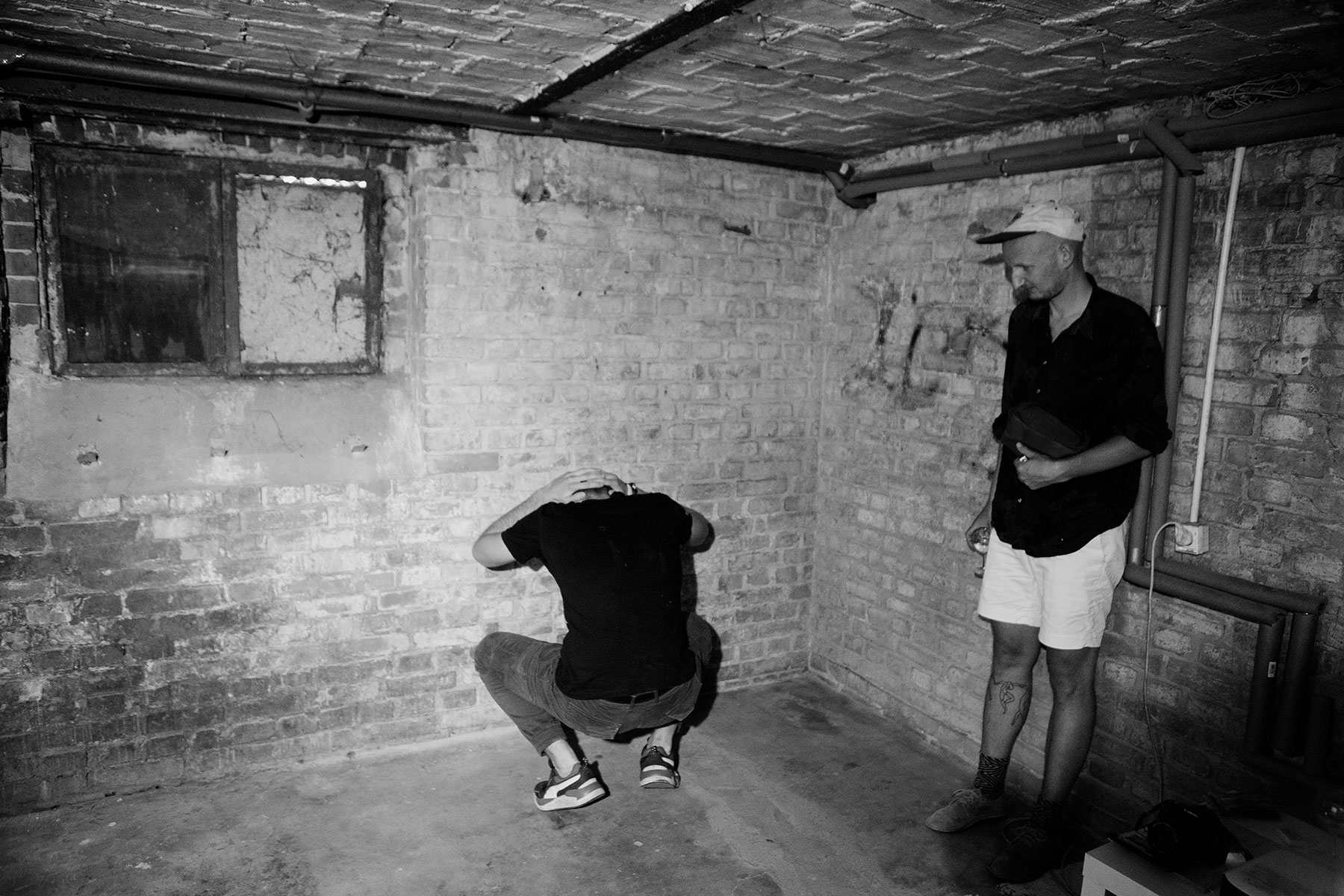Glossary:
Glossary:
375 0908 2334
+375: phone country code for Belarus;
09.08 – 13.08: days of protests post presidential elections 2020 in Belarus, during which brutal mass arrests by the militarized enforcement, severe beatings and tortures in detention facilities took place.
23.34: article of the Administrative Code of the Republic of Belarus “Violation of the procedures for organizing or holding mass events”, which became denominative for over 40 000 Belarusians.
The body you are calling is currently not available
The original word this widely known “out of reach” auto-response contains is THE PARTY (the number) – which sounds similar to THE BODY. Some time back, when I did not speak English well, I genuinely thought that the robotic voice indeed says “the body”.
This combination of digits, which visually resembles a phone number, and this auto-response are a trigger of the first days post 2020 elections in Belarus.
Mobile/internet connection was down those days, so calling friends to find out if all was well was possible very late at night or early in the morning only.
Whenever someone was out of reach, the phrase “The party you are calling is currently not available” would become full of fearsome prospects.
The Feeling of Guilt
In psychological terms, this feeling is closest to the so-called survivor guilt. This experience was first described through the work with the Holocaust survivors. To sum it up: I am luckier than the others, and at their expense. It often has consequences in the form of depression, increased addiction and self-sabotage.
As a psychologist, I have encountered strikingly similar feelings caused by very different degrees of risk and involvement. People abroad have a guilty conscience because they are not in Belarus. Those who are in Belarus but are afraid to protest, feel guilty as they do not join the protests. There are those who regularly demonstrate but have never been detained. Those who were detained but not beaten. Finally, those who were beaten, but have survived it. In each case, the norm of participation is not fulfilled and causes suffering. And it seems that to a certain extent this suffering is caused not by the guilt itself, but by the attempts to get rid of it.
Alexander Yankelevich, psychologist (source)
Evidence of violence
august2020.info – stories of people who have suffered from police brutaity during the peaceful demostrations in Belarus.
Link
Identification as
a form of empathy
Empathy is the capacity to understand or feel what another person is experiencing from within their frame of reference, that is, the capacity to place oneself in another's position. There is a broad range of emotional states, from a short emotional feedback all the way to full assimilation with the other person (identification).
Identification is a psychological process whereby the individual assimilates an aspect, property, or attribute of the other and is transformed wholly or partially by the model that the other provides. It is by means of a series of identifications that the personality is constituted and specified.
Identification is a partially conscious mental process. Conscious and unconscious identification helps establish a deep emotional connection, a feeling of belonging or unity with another person or a group of people. It puts one in another person’s shoes; to immerse, to be consumed by the circumstances, the space of another person, which contributes to a deep understanding...
Empathy for another person who is in pain activates the same brain areas that are responsible for our own pain. For this reason, abstract sensations (ideas about the pain of someone else on which empathy is based) are believed to be provided by the same neural circuits that are responsible for real feelings (one's own feeling of pain).
However, this overlap of brain areas for real pain and empathy is not enough to draw the conclusion that feeling pain and worrying about a suffering person is one and the same.
Thus, seeing something and imagining it is not the same. Even more, the sensations of real, physical pain and “abstract” pain, caused not by real stimuli, should differ from each other.
The theory that the feeling of empathy is based on the brain rendering its own feelings (for example, the feeling of pain) has not yet been considered proven. A solid experiment is required to demonstrate the connection between a person's own feelings and his ability for empathy. If feeling for a person suffering from pain is the same as feeling pain, then the power of empathy should be influenced by the practices of partial identity.
Sources:
Markus Rütgen, Eva-Maria Seidel, Giorgia Silani, Igor Riečanský, Allan Hummer, Christian Windischberger, Predrag Petrovic, and Claus Lamm.
Placebo analgesia and its opioidergic regulation suggest that empathy for pain is grounded in self pain // PNAS. DOI: 10.1073/pnas.1511269112.
Torture
By its definition, “torture” means any act by which severe pain or suffering, whether physical or mental, is intentionally inflicted on a person for such purposes as obtaining from him or a third person information or a confession, punishing him for an act he or a third person has committed or is suspected of having committed, or intimidating or coercing him or a third person, or for any reason based on discrimination of any kind, when such pain or suffering is inflicted by or at the instigation of or with the consent or acquiescence of a public official or other person acting in an official capacity. It does not include pain or suffering arising only from, inherent in or incidental to lawful sanctions.
Source: UN Convention against Torture and Other Cruel, Inhuman or Degrading Treatment or Punishment, Art. 1.1.
Positions / classification
«Reception»
Beating and humiliation of newcomers to the detention center in order to show them their “social rank” in this institution and enforce their subordination. For example, a newcomer is chased through a line of employees who beat him with batons.
Link
«Kneeling with your forehead on the floor»
The detained is fixated on his knees, his hands shackled behind his back, his forehead on placed against the floor.
Link
«Stretching»
The most common method of pressuring a detainee or a prisoner. At some distance from the wall, with legs stretched as wide as possible, the head resting face down on the wall, hands have to be raised up, knuckles to the wall. The longer, the more effective it is.
«Face down»
The detained is placed face down on a dirty floor with his hands clasped behind his back and forced to remain in the same position for a long time. The worst case: policemen jump or tread on him. Often transportation of the detainees takes place in this position, the detainees can also be stacked one on one.
Link
Squatting
Raman Bohush – one of the spectators during the premiere – a refugee from Belarus, told about another position in which he spent his detention for 2 hours

